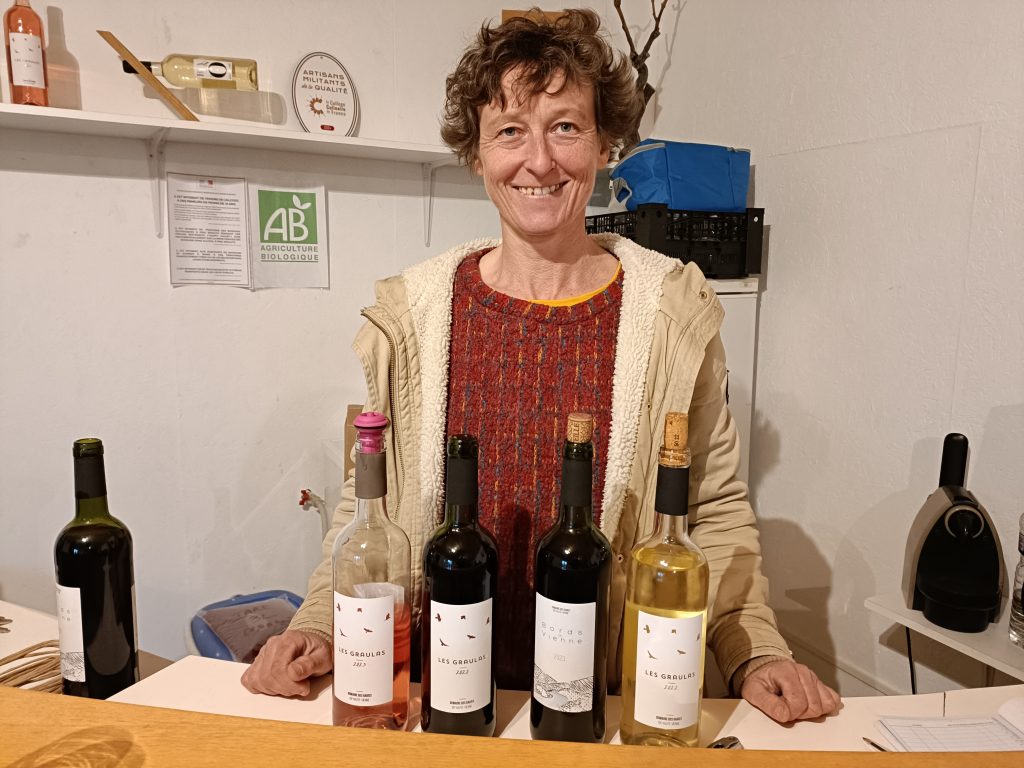 Oh no, not that stuff! Rosé de Verneuil – it’s horrible!
Oh no, not that stuff! Rosé de Verneuil – it’s horrible!
Hang on a minute, when did you last try it?
Not for ages, probably years ago, one glass was enough!
OK, let’s start again.
My own memories of the wine of the Domaine des Gabies, the only commercial vineyard in Haute Vienne, are not so negative, but as it was also many years since I’d tasted the range, I thought I’d take the half-hour trip up to the winery one cold, very wet day back in March to see how things have progressed. I was spurred on by an item on the local television news a few days earlier that after 31 years the ‘Friends of Rosé de Verneuil’ have ‘decided to throw in the towel’.
The group were founded in 1993 and two years later were the driving force behind the replanting the vineyard in 1995 by ‘les Vignerons de Verneuil’ on a site where vines had been grubbed up twelve years earlier – a bold attempt to revive a winemaking tradition in the Vienne Valley which has been attested since 1458.
The ‘friends’ relations with the present owner, Marie-Hélène Denis, seem to have cooled a little. She is herself a daughter and granddaughter of members of the original 1993 group; but truth to tell, the group wasn’t getting any younger and one of its members went on camera to affirm, rather graciously, that Marie-Hélène is a ‘très, très bonne vigneronne’. They wish her well and say in public, at least, that their ‘baby’ is in safe hands.
The site is impressive – south facing on warm sandy soils, above an acid soil bedrock of metamorphic rocks – granite, gneiss and schist. Such low pH soils often produce grapes with high pH, a benefit on sites where full ripening may be a challenge, though I’m not convinced that such problems are the case here.
Marie-Hélène took over the site in 2016, which has grown from an original 3.5 ha to 6.5ha in production today. It has been certified organic since 2022. Gamay is the principle variety with 4.5ha then 1 ha each of Pinot Noir and Chardonnay. Marie-Hélène also planted a hectare of Sauvignon Gris in 2022.
She produces 6 wines: the famous rosé, two Chardonnays, two reds: a 100% Gamay red and a blend of 80% Pinot Noir and 20% and a méthode traditionelle rosé. Vinification and aging is in fibre-glass tanks with the exception of the second Chardonnay which is aged in a ceramic egg for 12 months.
But what of the wine that the friends have battled so long to defend?
The Rosé 2022 did not impress me much. I found it lacking in fruit and rather surprisingly too aggressively acidic. Was it picked too early? I sensed that it is not Marie-Hélène’s own pride and joy either.
I thought I’d test out the other wines with some local friends, including at least two who had trotted out the local, ‘dreadful stuff’ line when I told them (separately) I’d been to visit the winery. We didn’t taste the sparkling wine and I couldn’t bring myself to buy any of the rosé. My friends were spared.
In short, they were unanimous in praise for all four wines, but thought the whites were particularly successful ( I agree) . They preferred the attractive fruitiness of the simpler Chardonnay to that aged in a stoneware egg (I disagree!) and enjoyed the vivid fruit of the Gamay. They were impressed by Bord de Vienne, the Pinot Noir dominated blend, but felt that the tannins were a little green. Just give it time.
My own notes are:
Les Graulas 2022 (White), 100% Chardonnay, 12% abvA clean, enticing and entirely correct Chardonnay aroma of grapefruit, fairly ripe apple and a hint of stone fruit. Crisply acidic, but far from searing, a hint of malo-lactic butteriness, but it’s the fruit that dominates. Simple and attractive.
Blanc d’O 2022. 100% Chardonnay, 12% abv, aged twelve months in a stoneware eggA much more creamy aroma, more complex, but less primary fruit. The same crisp acidity, followed by a lingering leesy, creamy texture and then a distinctly mineral finish.
Les Graulas 2022 (Red), 100% Gamay, 13% abvInvitingly fresh, bright, cherry and cranberry aromas. Slightly raw (high) acidity, but pleasantly fruity and virtually no detectable tannin.
Bords de Vienne 2023, 80% Pinot Noir, 20% Gamay, 13.5% abvMuch more complex aromas with plenty of red cherry fruit and even a hint of spice. More structured too. The acid is quite high and the tannins still a little gruff and green, though hardly pronounced. Medium length with again a distinct minerality.
The bottom line is that anyone who dismisses these wines is depriving themselves of real pleasure. They are far from the greatest bottles in the world and, quite frankly, they would be a bit of a hard sell on the export market, but they ought to be a sound reason for local pride and certainly don’t deserve to be mocked as they have been far too often in the past. And they are clearly getting better in Marie-Hélène’s capable hands. I look forward to her Sauvignon Gris, it could be just the thing to justify a much wider appreciation of the Domaine des Gabies.
